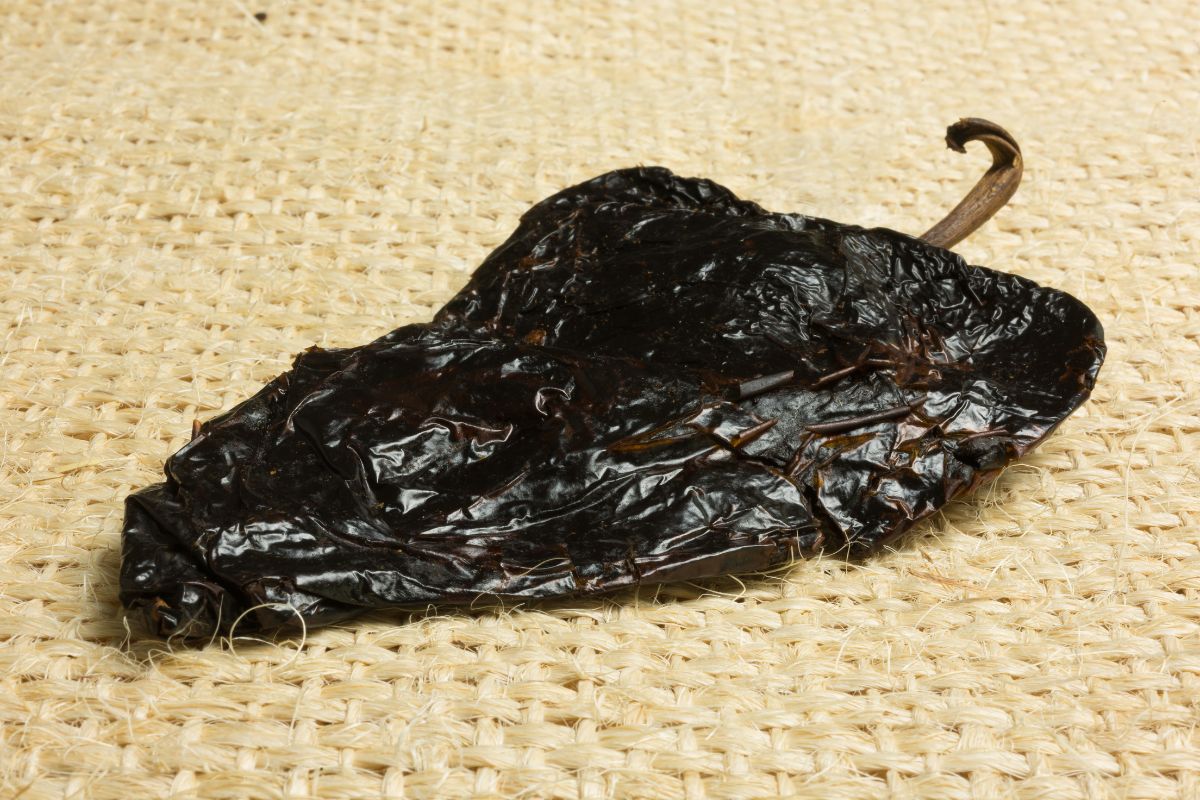Ancho chili pepper or chile ancho is a dried, deep reddish-brown colored chili pepper, a staple ingredient in Mexican cooking. It is the dried version of ripe poblano pepper and has a mild to medium heat level, with a fruity, slightly sweet flavor that is often described as smoky, earthy, and somewhat raisin-like.
Table of Contents
What is chile ancho?

Chile ancho is a dried poblano chile commonly used in Mexican recipes. Chile ancho is one of the three critical chiles in the traditional Mexican “holy trinity” of peppers, along with pasilla and guajillo chiles.
| Origin | Mexico |
| Dishes | Mole sauce, tamales, enchiladas, tacos, birria, and salsa |
| Appearance | Dark reddish-brown and has a wrinkled, flat shape |
| Flavor profile | has a mild, fruity flavor with raisins, tobacco, and coffee notes |
Origin
The pepper originates from Mexico, where it has been cultivated for centuries. The poblano pepper that is dried to create this spice comes from Puebla, Mexico.
Dishes
Chile ancho is present in Mexican food, particularly in sauces, stews, and marinades. In addition to Mexican cuisine, chile ancho is used in Tex-Mex and Southwestern cooking.
Some examples include mole sauce (Mexico’s national dish), tamales, enchiladas, tacos, birria, and salsa.
Appearance
The pepper is dark reddish-brown and has a wrinkled, flat shape. It is bigger and milder in flavor than other dried chili peppers.
Flavor profile
Chile ancho has a mild, fruity flavor with raisins, tobacco, and coffee notes. It also has a slightly sweet taste and a smoky aroma. It is often used with other chili peppers to add depth and complexity to dishes.
Nutritional Benefits of chile ancho
Eating ancho chiles can give your body various health benefits. These chiles contain high amounts of vitamins A and C, which help support your immune system and protect against heart disease and cancer. They’re also a good source of fiber, which helps with digestion.
Capsaicin, the chemical that gives peppers their spiciness, also has tremendous benefits, especially as a pain reliever. Besides, capsaicin may also aid in weight loss, lowering blood pressure, skin conditions, and diabetes.
What is chile ancho used for?
Chile ancho goes in traditional sauces like an enchilada and adobo sauce and in soups, stews, and marinades. It can also add flavor and heat to meat dishes, like carne asada or barbacoa.
Chile ancho recipe idea: Mole Sauce
How do you prepare chile ancho?
First, remove the stem and seeds from the chili pod. You can do this by cutting a small slit at the top of the chili and then gently pulling out the stem and seeds.
Then rehydrate it in hot water for about 15 minutes before using it in a sauce, marinade, or soup.
Alternatively, you can toast it in a dry pan over medium heat for a few minutes until it becomes fragrant. Once the chili is ready, you can use it in your desired recipe by pureeing it or chopping it into small pieces.
Is chile ancho the same as guajillo chile?
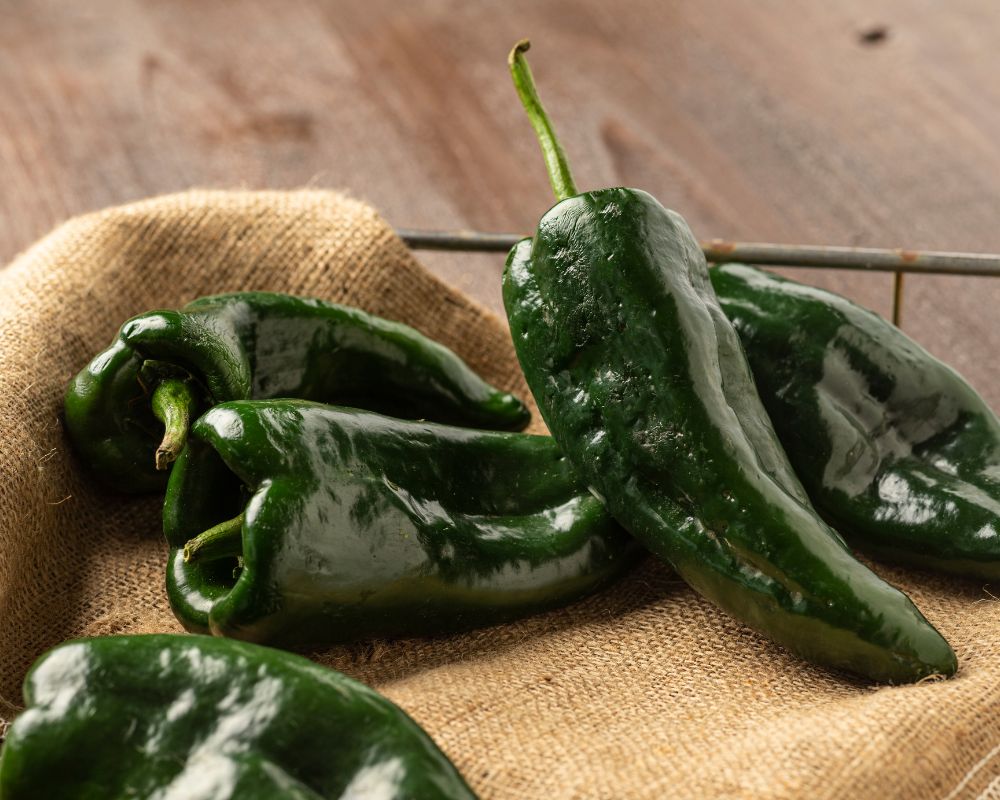
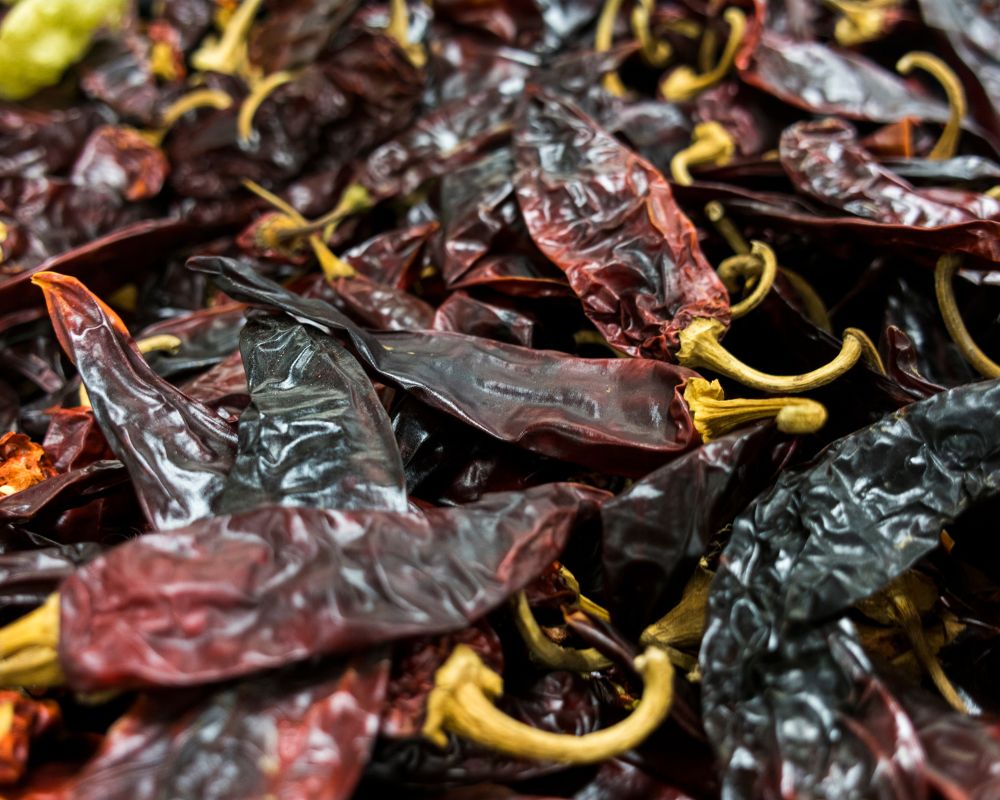
| Chile ancho | Dried poblano pepper with a mild, fruity, and slightly sweet flavor, wider and flatter, with a mild heat level, ranging from 1,000 to 2,000 SHU |
| Guajillo chile | Dried Mirasol pepper, shiny, reddish-brown skin and a long, narrow shape, has a medium heat level, ranging from 2,500 to 5,000 SHU |
Chile ancho and guajillo chile are not the same.
Chile ancho is a dried poblano pepper with a mild, fruity, and slightly sweet flavor. It is one of Mexico’s most commonly used dried chilies.
It is wider and flatter than a guajillo, with a deep reddish-brown color and wrinkled, smooth skin. It has a mild heat level, ranging from 1,000 to 2,000 Scoville heat units (SHU).
On the other hand, guajillo chile is a dried Mirasol pepper, also known as “chile guajillo.” It has shiny, reddish-brown skin and a long, narrow shape. Guajillo chile has a medium heat level, ranging from 2,500 to 5,000 Scoville heat units. It has a slightly sweet, tangy flavor and is common in salsas, soups, and stews.
What is the difference between chile ancho and chile de arbol?
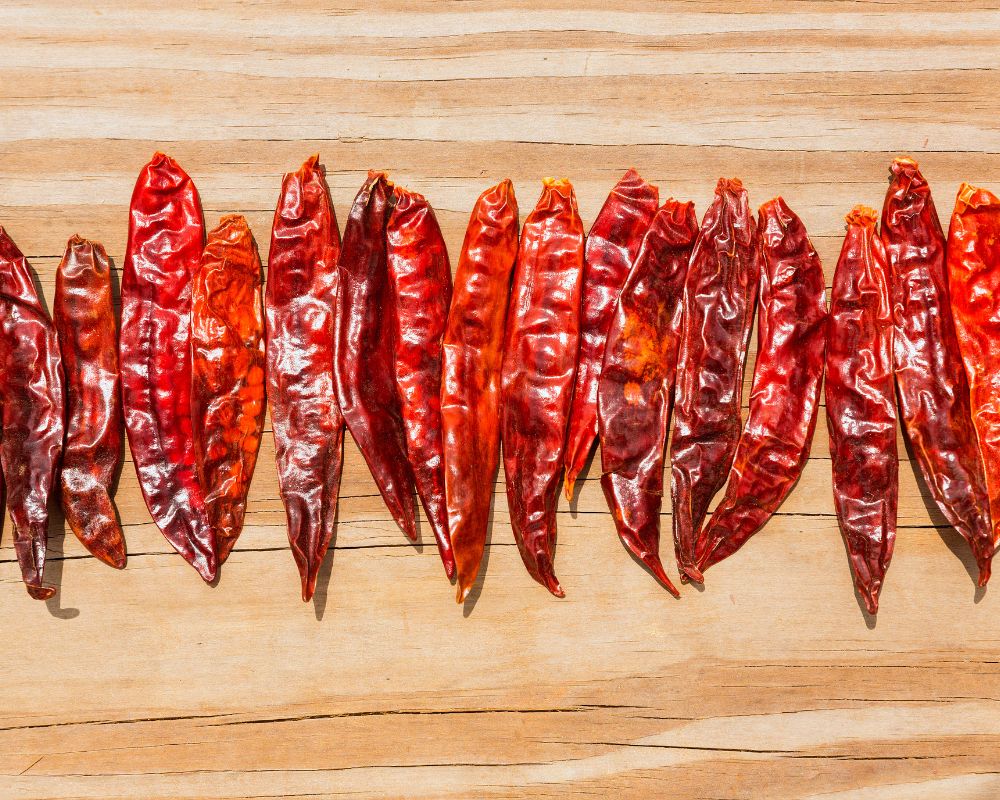

| Chile ancho | Dried poblano pepper with a mild, fruity, and slightly sweet flavor, wider and flatter, with a mild heat level, ranging from 1,000 to 2,000 SHU |
| Chile de arbol | A small, thin chili with a bright red color and a pointed tip, smoky and nutty, with a high heat level, ranging from 15,000 to 30,000 SHU |
Chile ancho is a large, mild chili with a sweet and fruity flavor. It is dark reddish-brown, and its skin is wrinkled and thick. Chile ancho has low to medium heat levels ranging from 1,000 to 2,000 Scoville units.
Chile de arbol is a small, thin chili with a bright red color and a pointed tip. It has a high heat level, ranging from 15,000 to 30,000 Scoville units, making it significantly spicier than chile ancho. The flavor of chile de arbol is smoky and nutty.
What is the best chile ancho substitute?
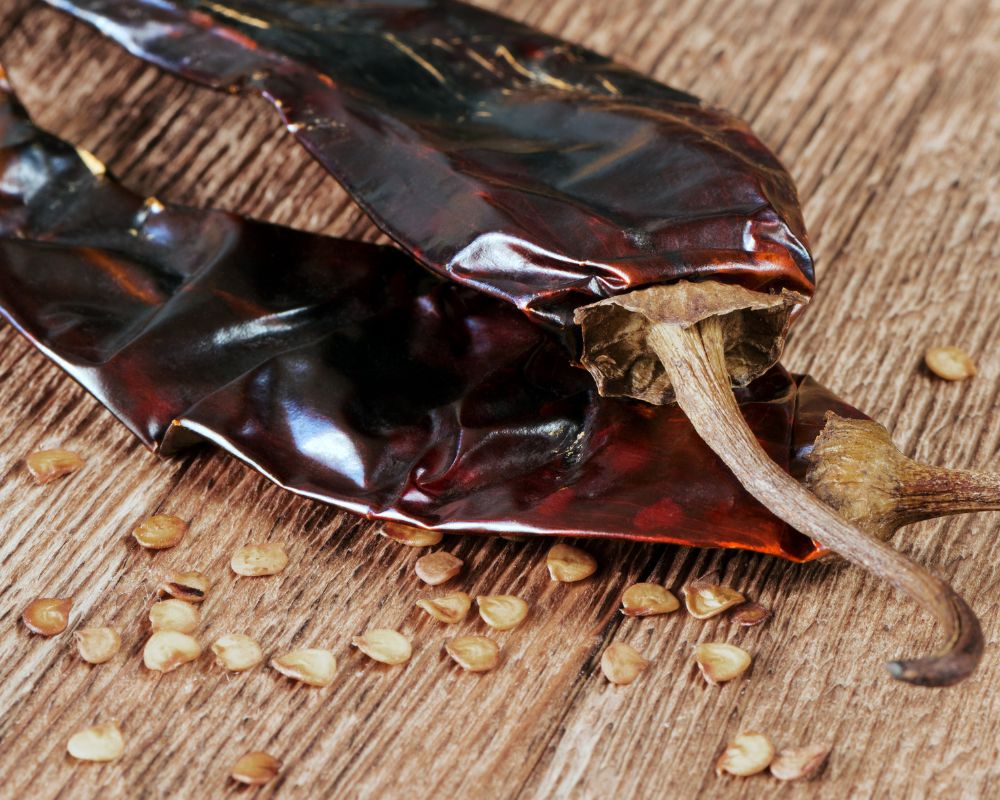
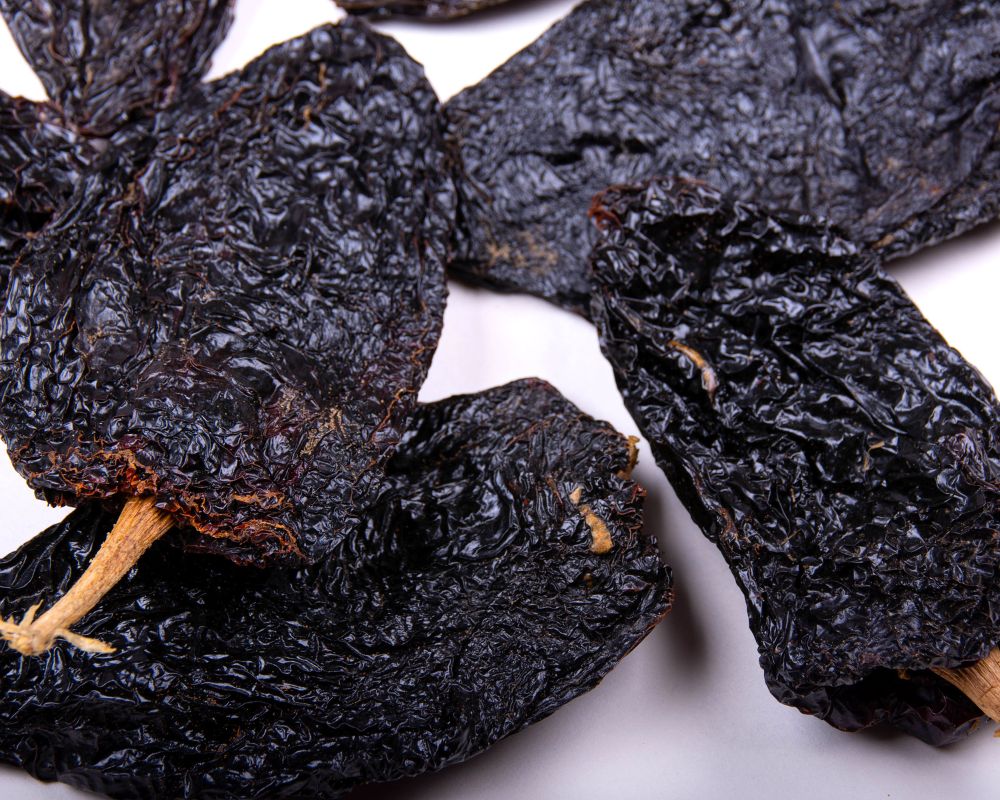
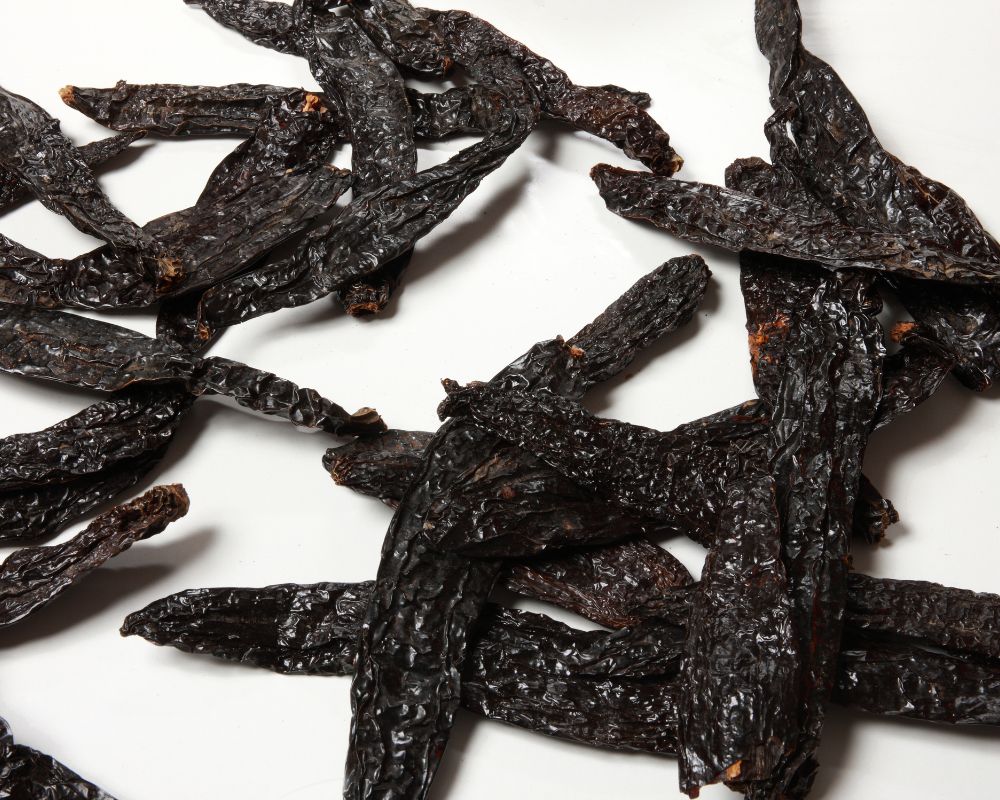
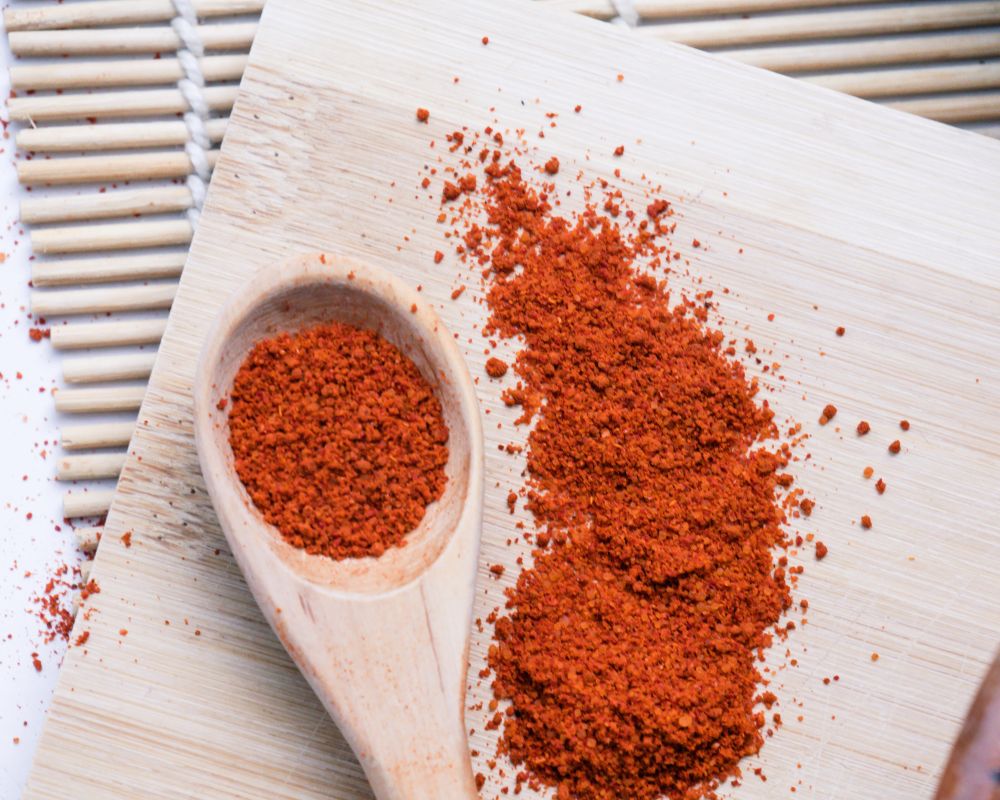
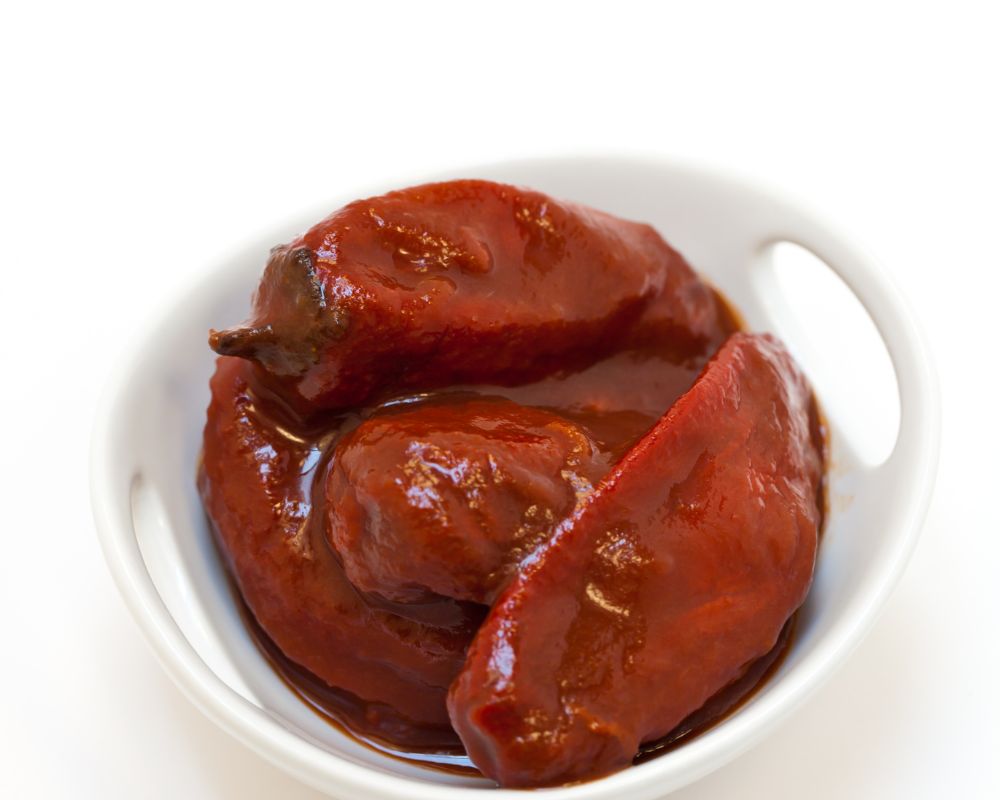
If you need a dried ancho chile pepper substitute, some options include other dried peppers and powders. Let’s see some alternatives:
- Guajillo pepper: similar in flavor to ancho pepper but slightly spicier.
- Mulato chiles: a bit sweeter and less spicy than ancho pepper but still have a similar flavor profile.
- Pasilla pepper: mildly spicy and slightly sweeter than ancho pepper but can be used as a substitute in many recipes.
- Chili powder: not a perfect substitute, but it can be used in a pinch to add a smoky and less intense spiciness.
- Chipotle pepper: much spicier than ancho pepper but still has a smoky flavor that can work in some recipes. Use sparingly and adjust to taste.
How to store chile ancho?
To maintain the quality of ancho chile, store it in a cool and dark place, such as a closed cupboard or drawer, away from heat and light sources.
While ancho chile doesn’t necessarily spoil, its potency can decrease over time, so its shelf life is flexible. Store whole ancho chiles for up to a year to get the best flavor out of them.

